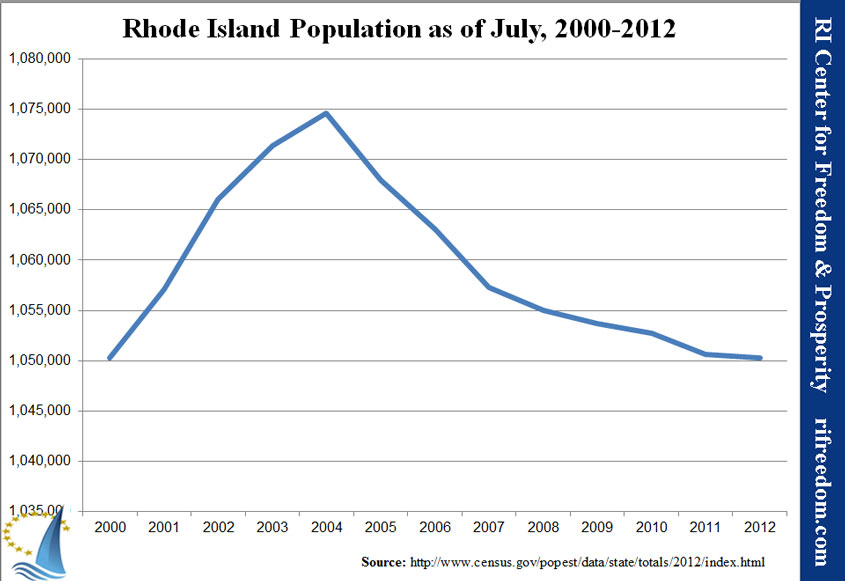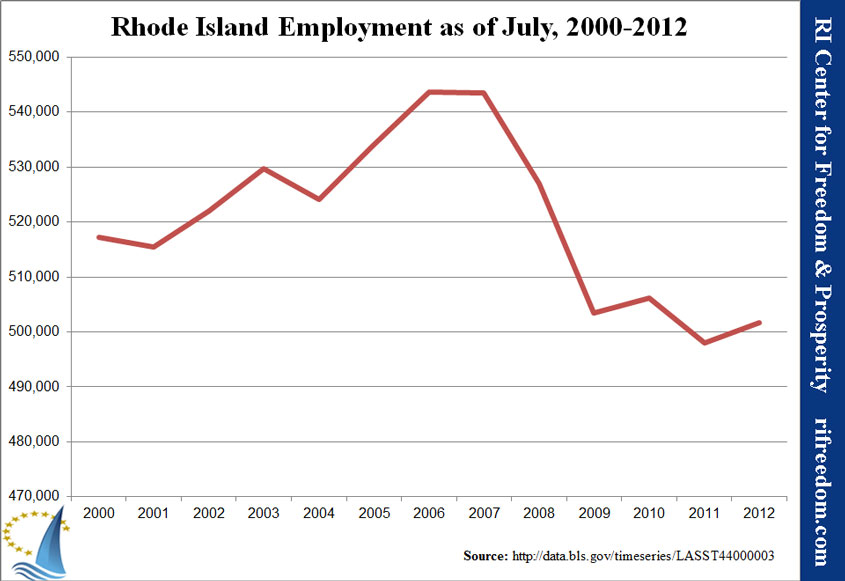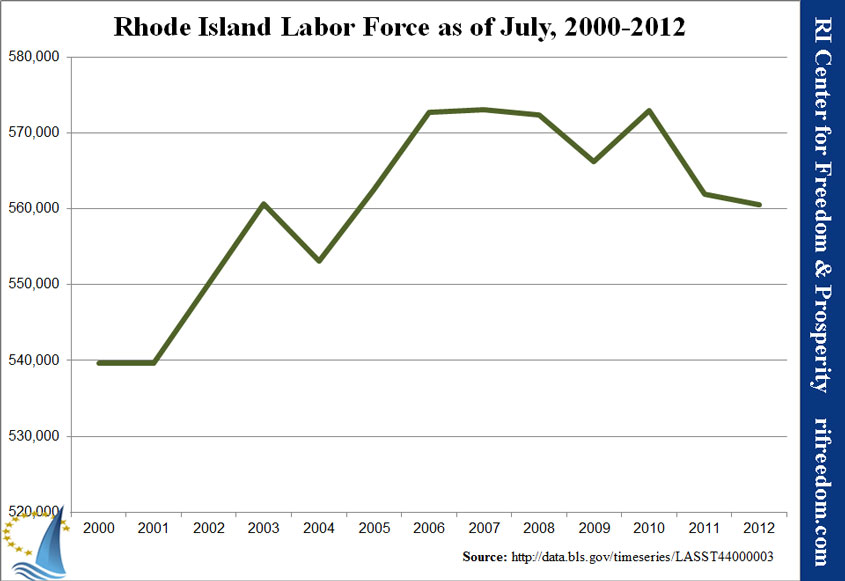10 News Conference Wingmen, Episode 1
Click here if video does not appear above.
ADDENDUM:
Watching the segment, I realize that I misspoke — erring mainly in my attempt to make a specific point during a five-minute segment with three people.
My intended point was that the lost population, as the only state to lose population for two years in a row, was emblematic of the failure to recover during the nation’s time of economic recovery, which (in terms of jobs) I place as beginning in February 2010. People leaving; employment static; the unemployment rate improving only because people are simply giving up; and so on.
When Bill Rappleye asked if the decline wasn’t going on under Carcieri, I hesitated because… of course it was. The numbers are muddied by the huge national economic skid beyond any governor’s control, but Rhode Island had been struggling throughout the decade. As one of the people writing about that problem all throughout that period, I knew that to be the case, but the time format didn’t really allow for the pause to give context then clarification that the point required.
The simple fact is that Rhode Island has been losing population consistently for almost a decade, as this chart shows:
Governor Donald Carcieri took office in 2003, and many of the policies that he pursued early on were strongly geared toward bold economic changes, like phasing out the capital gains tax and phasing in a decreasing flat tax on income. The following chart shows that employment increased for much of this period, although flattening after a few years (during which time the General Assembly was wavering on allowing the tax reforms to continue), and crashing at the leading edge of the great recession.
The size of the labor force (employed folks plus people looking for work within the latest month) ties the point together. For the most part, people held on to the idea of finding work in Rhode Island through 2010, with no recovery after that. That’s what I was saying; Governor Chafee took no big lead and ushered in no big plan to join the nation in recovering. Indeed, as I’ve pointed out before, he relies overly much on a belief that Rhode Island must tread water until the nation’s rising tide helps us to fulfill our traditional role as the last out of recessions.
For consistency’s sake, I’ve stopped the charts at July 2012, which is the last year for which the population data is currently available. But continuing it out another year for employment and labor force would show employment only making up the ground to its 2010 level and labor force falling again to its level between 2003 and 2004.
That indicates a loss of hope. A consistent loss of hope.
As I clumsily put it in the Wingmen segment, the stagnation and declines during Carcieri’s terms were not consistent in the way they’ve been with Chafee.
The more interesting discussion would be about the relationship with the General Assembly. I’d contend that the real comparison comes in that Carcieri battled the General Assembly in some respects, during his time in office, and was having some success holding back its worst tendencies while, as I said to Bob and Bill after we’d run out of time, Chafee has actually allowed the General Assembly to ratchet up the bad things that it’s inclined to do.






